Index
Understanding the Role and Risks of an Aircraft Electrician
Types of Insurance Coverage for Aircraft Electricians
Factors Influencing Aircraft Electrician Insurance Costs
How to Choose the Right Insurance Policy
Common Claims and How to Prevent Them
Legal and Regulatory Considerations
Contact Us
Phone
Location
Simi Valley, CA 93065
The Woodlands, TX 77382
Katy, TX 77494
Working as an aircraft electrician involves a unique blend of technical skill, precision, and responsibility. These professionals ensure the electrical systems on aircraft operate safely and efficiently, a critical role in aviation safety. Given the high stakes and complexities involved, having the right insurance coverage is essential. This comprehensive guide explores everything aircraft electricians need to know about insurance—from types of coverage to risk management strategies, helping you protect your career and livelihood.
Understanding the Role and Risks of an Aircraft Electrician
Aircraft electricians specialize in installing, maintaining, and repairing electrical wiring and systems on airplanes and helicopters. Their work covers a broad range of components, including lighting, navigation systems, communication devices, and power distribution units. The aviation industry’s stringent safety standards mean that any error can have serious consequences, both in terms of safety and financial liability. These professionals must be well-versed in the latest technologies and regulations, as the aviation sector is constantly evolving with advancements in electrical systems and avionics. Continuous education and training are essential, ensuring that electricians remain updated on new tools, techniques, and compliance requirements.
The risks faced by aircraft electricians are multifaceted. On one hand, there are physical hazards such as working at heights, exposure to electrical currents, and handling sensitive avionics equipment. On the other, there are professional risks including errors and omissions that could lead to costly repairs, grounding of aircraft, or even accidents. According to the Bureau of Labor Statistics, aircraft and avionics mechanics and technicians, which includes electricians, have an injury and illness rate slightly higher than the national average for all occupations, underscoring the need for robust safety and insurance measures. Furthermore, the nature of their work often requires them to be on call, ready to respond to emergencies at any hour, which can add a layer of stress and unpredictability to their job.
Why Insurance is Crucial for Aircraft Electricians
Given the complexity and responsibility of their work, aircraft electricians face potential liability claims that can be financially devastating. Insurance provides a safety net, covering legal fees, damages, and other costs arising from accidents or mistakes. Additionally, many employers and clients require proof of insurance before hiring electricians, making it a professional necessity as well as a protective measure. The types of insurance that are particularly relevant include general liability insurance, professional liability insurance, and workers' compensation. Each of these policies serves to protect electricians from different aspects of their work, ensuring that they can focus on their tasks without the looming threat of financial ruin due to unforeseen incidents.
Moreover, the importance of insurance extends beyond mere compliance with industry standards; it also fosters trust and confidence among clients and employers. When aircraft electricians carry adequate insurance, they demonstrate a commitment to professionalism and accountability, which can enhance their reputation in a highly competitive field. This trust can lead to more job opportunities and potentially higher earnings, as clients are often willing to pay a premium for electricians who can guarantee their work is backed by solid insurance coverage. In an industry where precision and reliability are paramount, having the right insurance not only safeguards the electrician but also contributes to the overall safety and efficiency of aviation operations.

Types of Insurance Coverage for Aircraft Electricians
The Insurance needs for aircraft electricians are specialized, reflecting the unique risks of their profession. Several types of insurance policies are particularly relevant:
1. General Liability Insurance
This is the foundational coverage that protects against third-party claims of bodily injury or property damage. For example, if an electrician accidentally damages an aircraft component or causes injury to a colleague on the job site, general liability insurance can cover the resulting costs. It typically covers legal defense fees, settlements, and judgments. Additionally, this insurance can also extend to cover incidents that occur off-site, such as during a demonstration or at a client's facility, ensuring comprehensive protection for the electrician's business activities.
2. Professional Liability Insurance (Errors and Omissions)
Also known as E&O insurance, this coverage protects against claims of negligence, mistakes, or failure to perform professional duties. Since aircraft electricians’ work directly affects flight safety, even minor errors can lead to significant consequences. Professional liability insurance helps cover claims related to faulty workmanship, missed inspections, or incorrect installations. This type of insurance is particularly crucial in an industry where the stakes are high; a single oversight can lead to costly delays or even accidents, making it essential for electricians to have this safeguard in place.
3. Workers’ Compensation Insurance
Given the physical nature of aircraft electrical work, injuries on the job are a real risk. Workers’ compensation insurance provides medical benefits and wage replacement to employees injured while performing their duties. This coverage is often mandatory, depending on jurisdiction and employment status. Furthermore, it not only protects the employees but also shields employers from lawsuits related to workplace injuries, creating a safer and more secure working environment for everyone involved.
4. Commercial Property Insurance
For electricians who own or lease workshops, tools, or equipment, commercial property insurance protects against loss or damage due to fire, theft, or natural disasters. Since specialized tools and diagnostic devices can be costly, this coverage helps safeguard business assets. In addition to protecting physical assets, this insurance can also cover business interruption losses, ensuring that an unexpected event does not lead to significant financial strain or operational downtime.
5. Commercial Auto Insurance
If the electrician uses vehicles for work-related travel—such as transporting tools or visiting aircraft at different locations—commercial auto insurance is necessary. It covers accidents, damages, and liability arising from vehicle use. This insurance is vital for those who operate larger vehicles, such as vans or trucks, which may require additional coverage due to the increased risk associated with transporting heavy equipment and tools. Moreover, it can also provide coverage for personal vehicles used for business purposes, ensuring that all travel-related risks are adequately managed.
6. Inland Marine Insurance
This specialized coverage protects tools, equipment, and materials while in transit or at temporary job sites. For aircraft electricians who frequently move between hangars, airports, and maintenance facilities, inland marine insurance ensures valuable assets remain protected. This type of insurance is particularly beneficial for those who work with high-value equipment, as it covers loss or damage that may occur during transportation, loading, or unloading, further securing the electrician's investment in their tools and ensuring they can continue to operate without significant financial setbacks.
Factors Influencing Aircraft Electrician Insurance Costs
Insurance premiums for aircraft electricians vary widely based on several factors. Understanding these can help professionals make informed decisions and find the best coverage at competitive rates.
Experience and Qualifications
Insurers often assess the electrician’s level of experience, certifications, and training. Highly qualified electricians with extensive experience and recognized certifications such as FAA Airframe and Powerplant (A&P) licenses may benefit from lower premiums, as they are perceived as lower risk. Additionally, ongoing education and specialized training in emerging technologies, such as electric propulsion systems or advanced avionics, can further enhance an electrician's profile. This not only demonstrates a commitment to safety and excellence but may also attract favorable insurance terms, as insurers recognize the value of staying current in a rapidly evolving industry.
Scope of Work and Clientele
The types of aircraft serviced and the nature of contracts impact insurance costs. Working on larger commercial aircraft or government contracts may increase premiums due to higher liability exposure. Conversely, servicing smaller private planes might carry lower risk. Furthermore, the diversity of clientele can play a role; electricians who work with a wide range of aircraft, from vintage models to modern jets, may face different risk assessments. Establishing long-term relationships with clients and demonstrating a solid track record of safety and reliability can also help in negotiating better insurance rates, as insurers often favor electricians with proven performance histories.
Claims History
A history of insurance claims can signal higher risk to insurers, leading to increased premiums or difficulty obtaining coverage. Maintaining a clean claims record through diligent work practices and risk management is beneficial. Moreover, implementing proactive safety measures, such as regular training sessions and thorough inspections, can significantly reduce the likelihood of incidents that lead to claims. Electricians who can document their safety protocols and demonstrate a commitment to minimizing risks may find themselves in a stronger position when negotiating insurance terms, as insurers appreciate clients who prioritize safety and risk mitigation.
Coverage Limits and Deductibles
Higher coverage limits provide greater protection but come with increased premiums. Similarly, choosing higher deductibles can reduce premium costs but requires the electrician to pay more out-of-pocket in the event of a claim. Balancing these factors is key to optimizing insurance expenses. It’s also worth noting that electricians should regularly review their coverage limits in relation to the value of the aircraft they service and the potential risks involved. As the industry evolves and new technologies emerge, adjusting coverage to reflect the current landscape can ensure that electricians remain adequately protected without overextending their budgets.
Geographic Location
Insurance costs can vary based on where the electrician operates. Regions with higher rates of accidents, theft, or natural disasters may see higher premiums. Additionally, local regulations and insurance market conditions influence pricing. For instance, electricians working in areas prone to severe weather events may need to invest in additional coverage for equipment and liability. Understanding the specific risks associated with their geographic location allows electricians to tailor their insurance policies more effectively. Moreover, networking with local industry associations can provide insights into regional trends in insurance costs, helping electricians make informed choices about their coverage options.
How to Choose the Right Insurance Policy
Selecting the appropriate insurance policy requires careful evaluation of coverage needs, risks, and budget. Here are some steps to guide aircraft electricians through the process:
Assess Your Risks Thoroughly
Begin by identifying the specific risks associated with your work environment, tools, and client base. Consider the potential financial impact of various incidents, from equipment damage to professional liability claims.
Compare Multiple Insurance Providers
Not all insurance companies offer the same coverage options or pricing. Request quotes from several providers specializing in aviation or trades insurance. Pay attention to policy details, exclusions, and customer service reputation.
Consult with an Insurance Broker or Specialist
Insurance brokers who understand the aviation industry can provide valuable insights and help tailor policies to your unique needs. They can also assist in negotiating better terms and ensuring compliance with industry standards.
Review Policy Terms Carefully
Before committing, read the fine print to understand coverage limits, deductibles, exclusions, and claim procedures. Ensure the policy covers all critical aspects of your work, including subcontractors if applicable.
Consider Bundling Policies
Some insurers offer discounts for bundling multiple coverages, such as general liability and commercial property insurance. Bundling can simplify management and reduce overall costs.

Common Claims and How to Prevent Them
Understanding common insurance claims faced by aircraft electricians can help in implementing preventive measures, reducing risk, and maintaining lower insurance costs.
Electrical System Failures Due to Installation Errors
One of the most frequent claims involves faults caused by improper wiring or installation. These can lead to system malfunctions or even in-flight emergencies. Preventing such claims requires strict adherence to FAA regulations, thorough testing, and continuous education on evolving aircraft technologies.
Injuries from Electrical Shocks or Falls
On-the-job injuries are common due to the nature of the work. Using proper personal protective equipment (PPE), following safety protocols, and maintaining a clean work environment significantly reduce these risks.
Damage to Aircraft Components
Accidental damage to expensive avionics or structural parts can result in costly claims. Careful handling, use of appropriate tools, and clear communication with maintenance teams help minimize these incidents.
Delays and Financial Losses from Work Errors
Errors that cause grounding or delays can lead to claims for lost revenue or additional repair costs. Comprehensive professional liability coverage and quality control procedures are essential safeguards.
Legal and Regulatory Considerations
Aircraft electricians must navigate a complex regulatory landscape that influences insurance requirements and professional standards.
FAA Regulations and Certifications
The Federal Aviation Administration (FAA) sets rigorous standards for aircraft maintenance personnel. Compliance with these regulations is mandatory and often a prerequisite for insurance coverage. Maintaining up-to-date certifications and following FAA-approved procedures reduces liability risks.
State and Local Insurance Mandates
Insurance requirements vary by state and locality, particularly concerning workers’ compensation and commercial auto insurance. Understanding and adhering to these mandates is critical to avoid penalties and ensure continuous coverage.
Contractual Insurance Obligations
Many contracts with airlines, maintenance organizations, or government agencies specify minimum insurance coverage levels. Failure to meet these requirements can result in loss of contracts or legal disputes.
Risk Management Strategies Beyond Insurance
While insurance is vital, proactive risk management can further protect aircraft electricians from incidents and claims.
Regular Training and Skill Development
Continuous education on new technologies, safety protocols, and regulatory changes enhances competence and reduces errors. Many insurers offer premium discounts to electricians who participate in approved training programs.
Implementing Safety Protocols and Checklists
Standardized procedures and checklists help ensure consistency and thoroughness in electrical work. These tools minimize oversight and improve documentation, which is valuable in defending against claims.
Maintaining Detailed Records
Accurate documentation of work performed, inspections, and communications provides evidence in case of disputes or claims. Digital record-keeping systems can streamline this process.
Investing in Quality Tools and Equipment
Using reliable, calibrated tools reduces the likelihood of errors and equipment damage. Regular maintenance of tools also supports safe and efficient work.
Conclusion: Protecting Your Career and Business
Aircraft electricians operate in a high-stakes environment where precision and safety are paramount. Insurance is not merely a legal or contractual formality—it is a critical component of professional risk management that safeguards your financial security and reputation.
By understanding the types of insurance available, factors influencing costs, and the importance of comprehensive coverage, aircraft electricians can make informed decisions that align with their unique needs. Coupled with diligent risk management practices and adherence to regulatory standards, the right insurance policy empowers aircraft electricians to focus on their vital work with confidence and peace of mind.
For those entering or currently working in this field, consulting with insurance professionals who specialize in aviation trades is highly recommended. This ensures tailored coverage that reflects the complexity and responsibility inherent in aircraft electrical work.
Types of Electrician Insurance We Provide
Areas we serve




